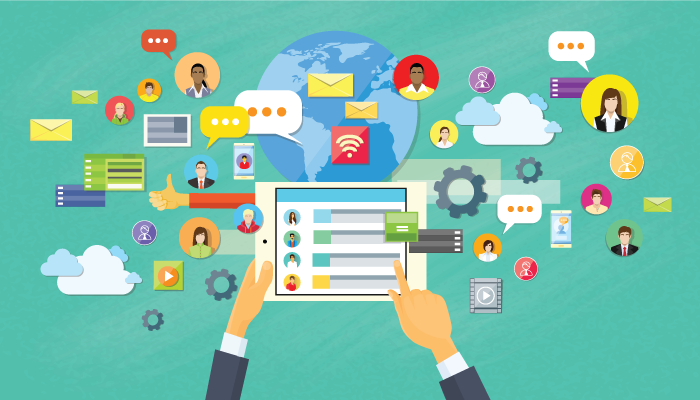Self-service options aren’t new. In fact, we’ve been helping ourselves for decades. In the early days of self-service, we had few options, like vending machines, ATM kiosks, and self-service gas stations. As technology has advanced, we now have a plethora of options. With self-service options heavily influencing our lives, it’s easy to dismiss how simple the services make daily living. One of these such conveniences is a self-service IT portal.
What is an Effective IT Self-Service Portal?
A Self-Service IT Portal is a website that empowers the consumer, allowing individuals to find needed answers quickly. Since most people are comfortable searching for information, most consumers have the requisite knowledge base for self-service portals. Also, our society is in love with speed. The ability to find information through a quick search versus taking the time to have a conversation is integral. Myriads of studies show that level one IT problems occupy up to 40% of an IT professional’s time. Having a self-service portal is a win-win since IT professionals can now save time (and money), while consumers find their answers faster.
As consumers search for more and more data, remembering where they found the data in the first place is critical. A self-service portal not only provides this information to consumers, but it also delivers a positive consumer experience. Although aesthetics can be important, a self-service portal will fail if it doesn’t provide the information needed.
Benefits of a Self-Service IT Portal
Both the consumer and the service provider benefit from a well-organized portal. Since so many services are now computerized, the IT department is generally viewed as the backbone of every organization.
Have you ever searched for a piece of information on a search engine? Have you ever called support and waited on hold for an issue with your cable or cell phone provider? Compare these two experiences and how you felt after each one. This comparison will give you an idea of how people feel with a self-service IT portal versus not having one.
Some benefits of a self-service IT portal include:
- Reduces costs by having IT professionals solving higher level tasks.
- Increases consumer knowledge, while providing a fondness for the company.
- Improves productivity by allowing consumers to find the answers themselves.
- Improves the relationship between IT and consumers.
- Improves overall consumer satisfaction and company credibility.
- Reduces wait times in a queue for help.
The general purpose for a self-service IT portal is an easy one, but producing one is complex and requires planning.
Challenges of Implementing a Self-Service Portal
One of the many challenges of implementing a self-service portal is the changing impact of an IT department. The role of an IT department has evolved over the past decade. IT has shifted to more of a customer service role, allowing self-service portals to offset many responsibilities originally attributed to the IT department.
However, with this said, the IT department needs to monitor who has access to what. With a portal, IT may give up some control, however, the benefits outweigh this potential disadvantage. Mainly, IT departments gain more time to focus on higher level issues, and time is one commodity that’s priceless.
Another challenge of self-service portals is consumers’ familiarity and comfort with the portal itself. Have you seen or used a self-service portal that’s not updated? Or one that’s hard to navigate? The portal must have information, protocols, and functions that consumers want and/or need. In this way, they are more likely to use it, allowing IT to monitor the portal’s utilization while notifying IT when updates are warranted.
Companies need to educate their consumers on using the portal as a first stop as opposed to initially contacting the IT department. For this, it’s a good idea for IT to walk consumers through the portal, teaching them about the portal’s functionality and use. After consumers develop a comfort with the portal, this self-service option should be the go-to platform whenever an issue arises.
What Should be Included in an IT Portal?
The goals of an IT self-service portal are great customer experience, reduced costs, and improved productivity. To achieve these goals, the following should be included in a top-notch portal:
- Searchability
- Tutorials and videos of solutions
- Tracking and status updates via the web and email
- FAQs and a configurable knowledge base
- Intuitive UI
- Accessible by multiple devices
- Communication tools such as chat, forums, and social tools
- The ability to perform level one functions, such as a password reset
- Analytics and dashboards
- Knowledge base rating system
Measuring the success of an IT self-service portal develops over time, gaining higher gains with IT department backing. Being able to accept and analyze user ratings of specific information allows IT professionals to update or change the information, creating a more user-friendly platform. Remember, the goal of an IT self-service portal is to save time for everyone–the consumers, the IT department, and the organization. When all sides win, the success of the portal itself is all but written.
Measuring the success and creating a community of raving fans go hand-in-hand for your IT self-service portal. Measuring success with user feedback creates a community when consumers experience their suggestions being implemented. Also, responding to feedback positively serves as a strategy for building a social community of friends. These new friends will serve as brand ambassadors, because they feel like part of the community.
As a side note, optimizing your self-service portal for search can greatly increase your web traffic and showcase your expertise. The rating system will work in your favor by establishing more credibility to the portal. This is yet another significant benefit that a well organized and planned IT portal provides.
The Future of the IT Self-Service Portal
Over the years, the IT self-service portal went from being a nice addition to your business to becoming a necessity. The traditional ways of obtaining assistance create frustration and time delays. Nobody wants to wait for service. The demand for instant customer service creates both headaches and opportunities for IT departments.
The IT self-service portal should not only serve as a source of knowledge, but also a place that anticipates consumers’ needs before they arise. This is much easier said than done, with the IT department at the forefront. IT departments must now provide engaging customer-focused communication and support. IT departments will dictate the dialogue in this category, and it will be interesting to watch the once “if it is not broke don’t fix it” department become a consumer-focused driven department.
IT Self-Service Portal Software: Solutions for You
BMC’s self-service portal software helps businesses be successful by providing intuitive mobile and social capabilities, allowing consumers to quickly solve routine technical problems, eliminate frustrating forms, and crowdsource proven solutions.
BMC expert consultants are available to work with you to bring their knowledge and expertise to your organization. BMC provides custom-tailored Deployment Services for your organization to tackle the unique challenges you face. When partnering with BMC, you get:
- Faster service delivery: Agile releases that keep up with rapid demand
- Visibility across data: Ensure compliance and data accuracy
- Cost-effective service: Increased productivity and performance
- Experienced professionals: Equip you with the tools you need for success
- Conversion or upgrade: Seamless modernization or total replacement
- All tailored for the specific needs of your organization.
Download or view the Solution Implementation Overview online to learn more about how BMC Consulting Services can help you.







